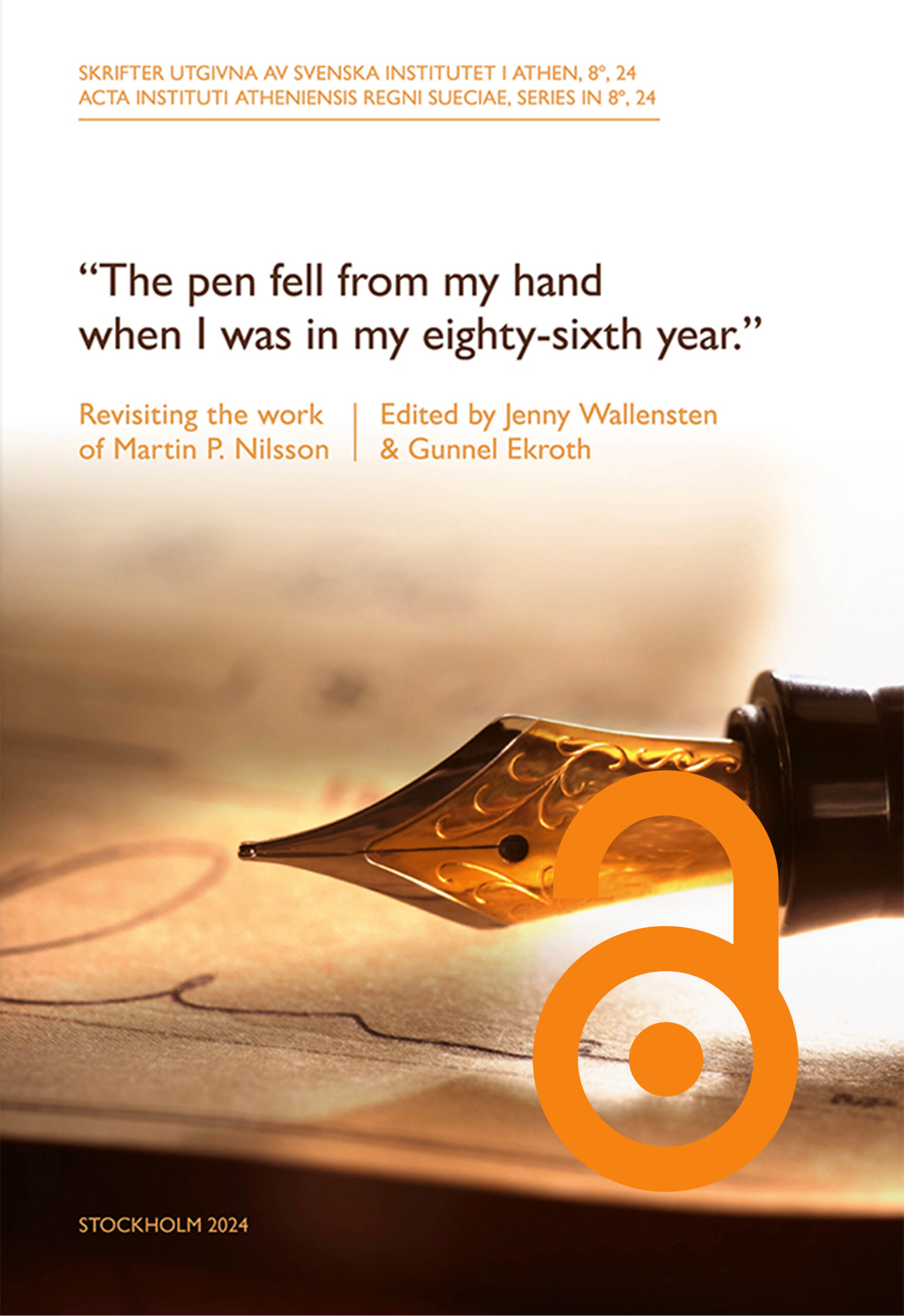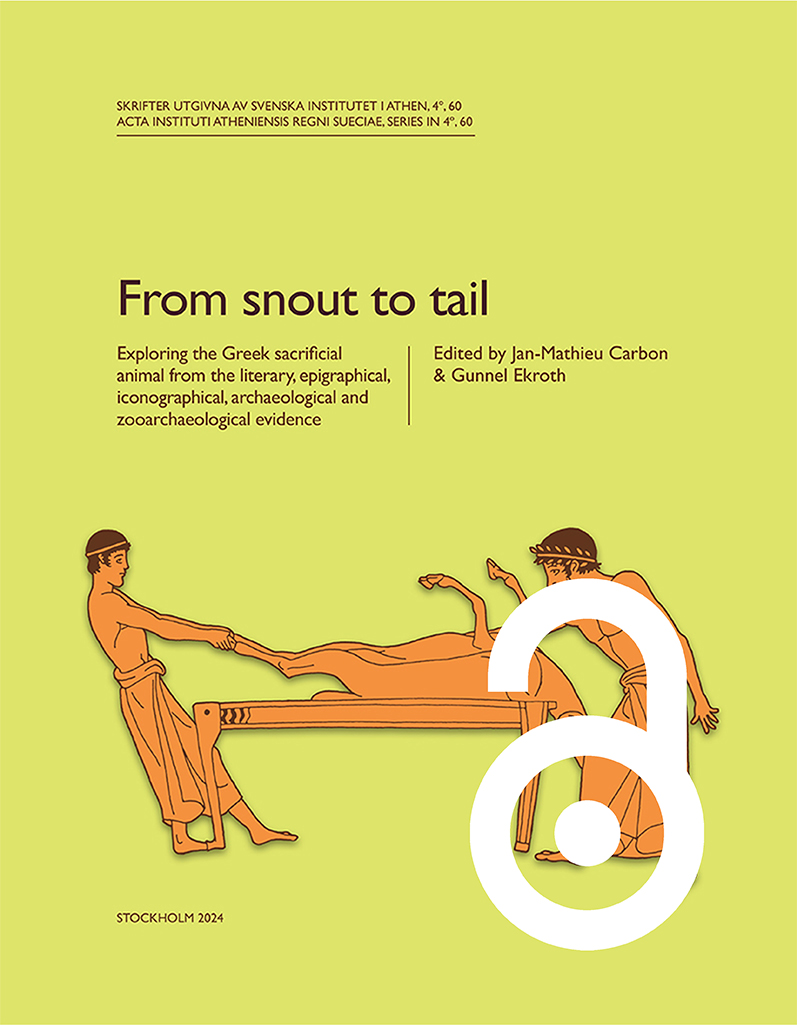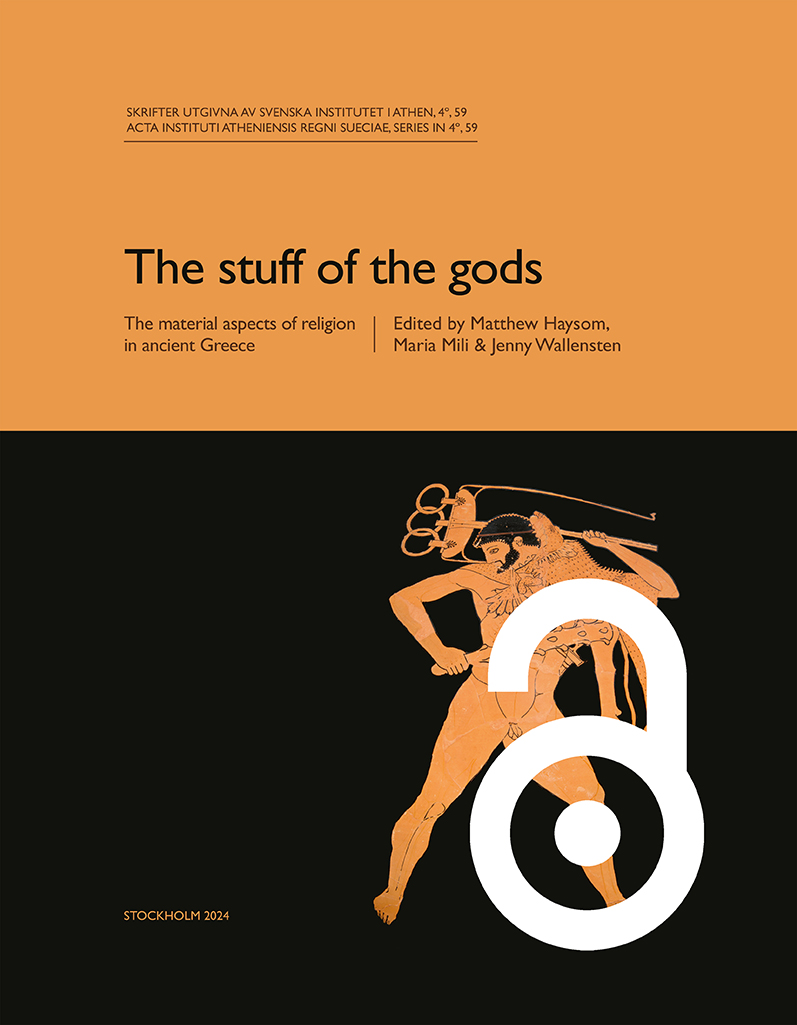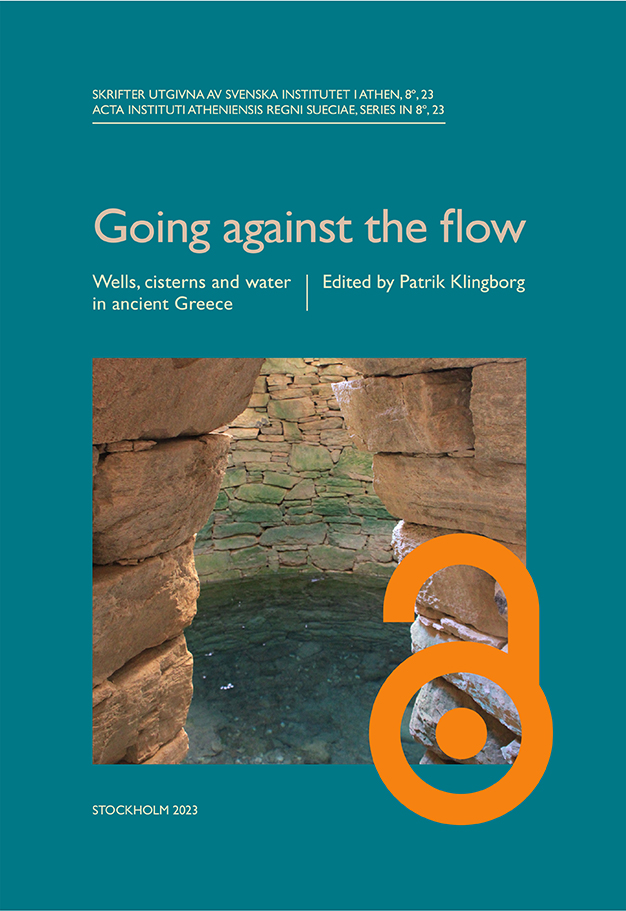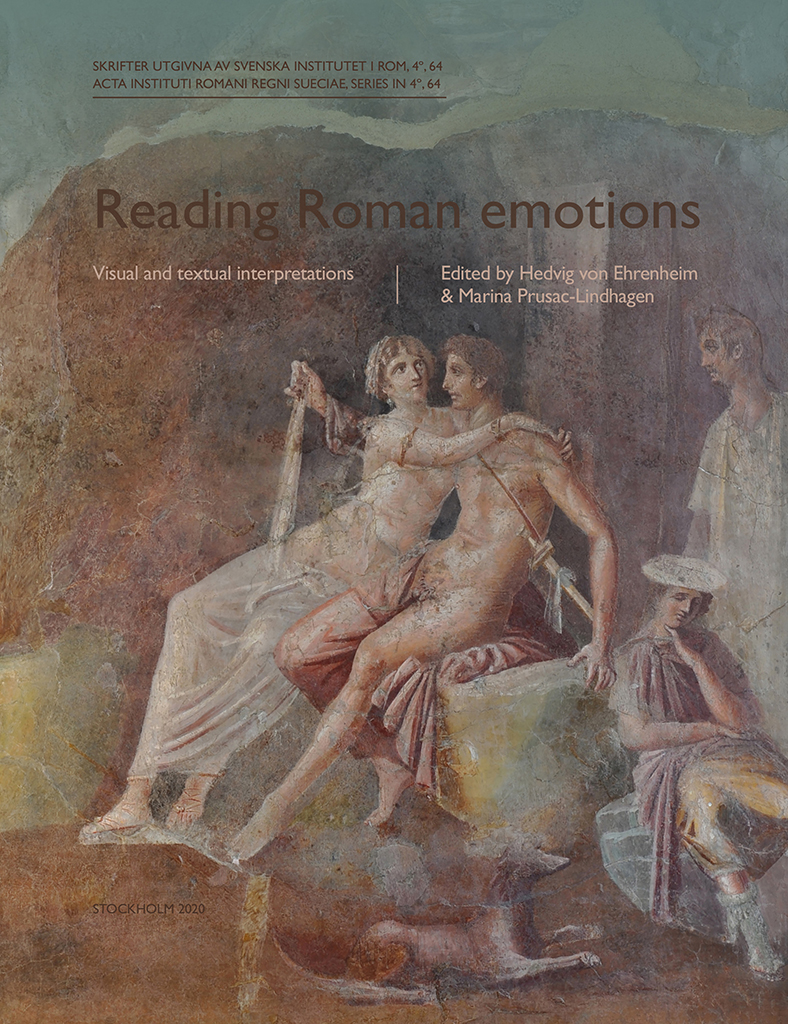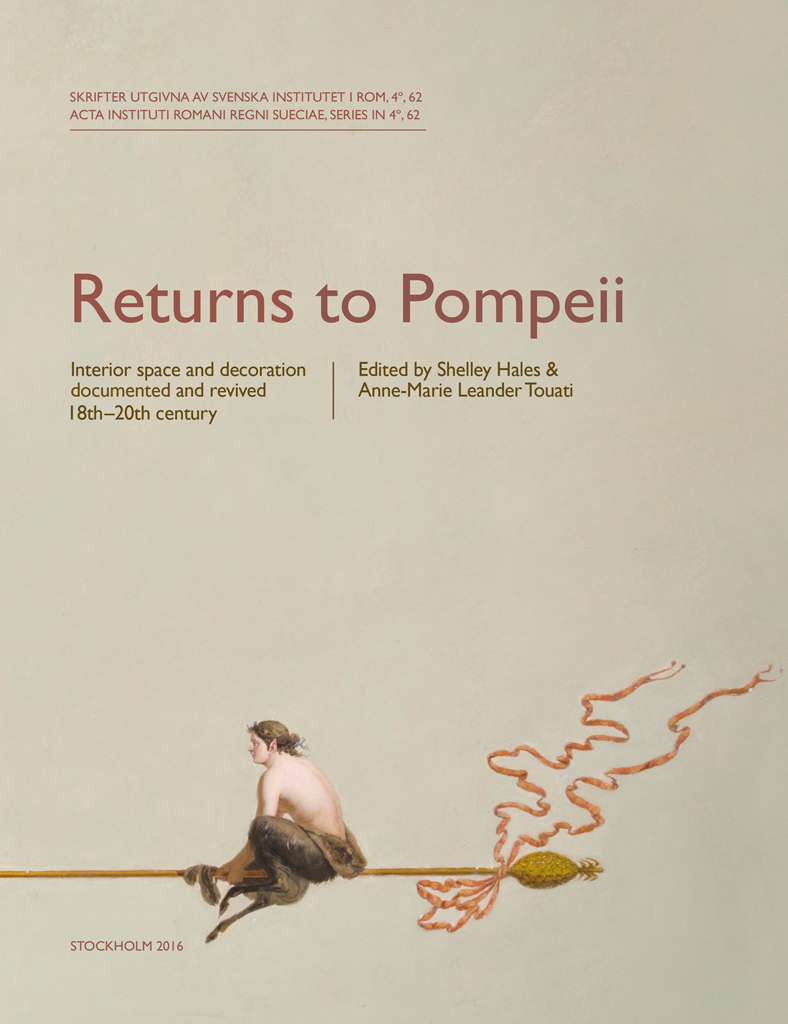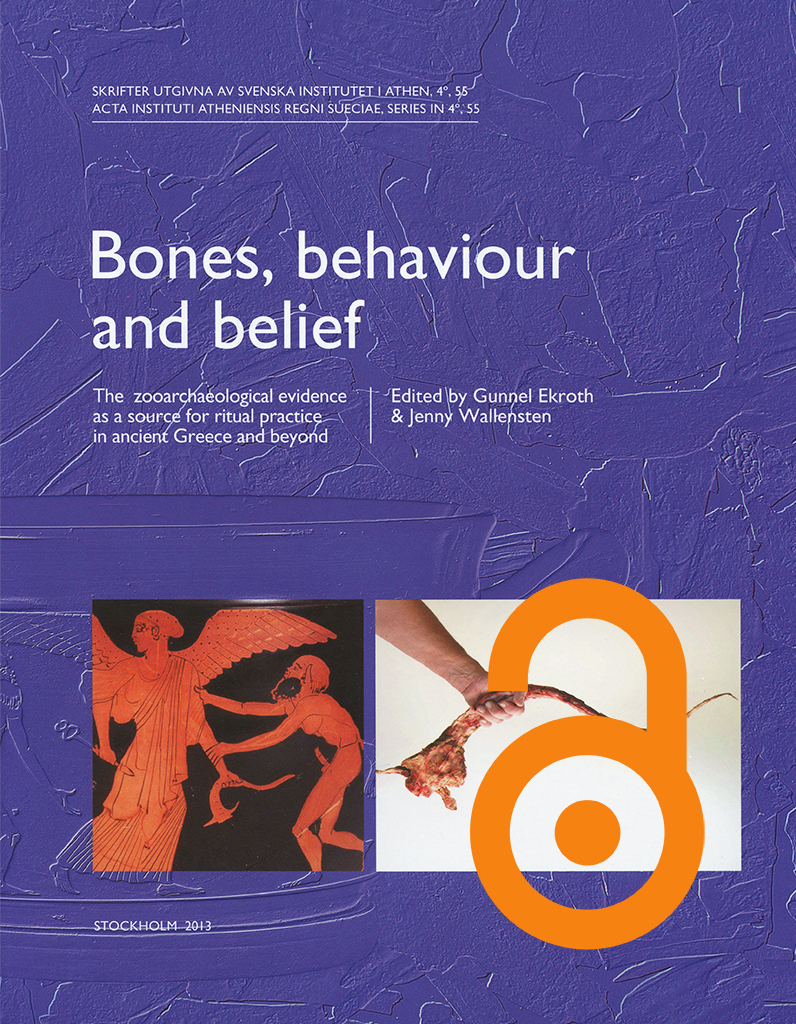Published by the Swedish Institute at Athens. Distributed by Eddy.se AB. All content available with open access, use links below. “The pen fell from my hand when I was in my eighty-sixth year.” Revisiting the work of Martin P. Nilsson Edited by Jenny Wallensten & Gunnel Ekroth https://doi.org/10.30549/actaath-8-24 2017 marked the 50th anniversary of both the death of Martin P. Nilsson, the eminent Swedish scholar of ancient Greek religion, and the publication of the third edition of his monumental Geschichte der griechischen Religion. Nilsson’s scholarly output was huge, with a production of around 20 items annually, and he touched upon most aspects of the study of ancient Greek religion, be it in a book or an article, in a footnote or an in-depth argument. This volume constitutes a re-reading of Nilsson in the light of new ancient evidence, and modern methods and theoretical approaches. Five leading researchers in this field of religion revisit major works of Nilsson’s oeuvre—Geschichte der griechischen Religion, vols 1 and 2 (Jon Mikalson and Eftychia Stavrianopoulou), Greek folk religion (Vinciane Pirenne-Delforge), Minoan-Mycenaean religion (Matthew Haysom) and Greek piety (Michael D. Konaris)—in order to explore whether his works today are mainly touched upon with just the usual…
Published by the Swedish Institute at Athens. Distributed by Eddy.se AB. All content is available with open access, use links below. From snout to tail. Exploring the Greek sacrificial animal from the literary, epigraphical, iconographical, archaeological, and zooarchaeological evidence Edited by Jan-Mathieu Carbon & Gunnel Ekroth https://doi.org/10.30549/actaath-4-60 Animal sacrifice fundamentally informed how the ancient Greeks defined themselves, their relation to the divine, and the structure of their society. Adopting an explicitly cross-disciplinary perspective, the present volume explores the practical execution and complex meaning of animal sacrifice within ancient Greek religion (c. 1000 BC–AD 200). The objective is twofold. First, to clarify in detail the use and meaning of body parts of the animal within sacrificial ritual. This involves a comprehensive study of ancient Greek terminology in texts and inscriptions, representations on pottery and reliefs, and animal bones found in sanctuaries. Second, to encourage the use and integration of the full spectrum of ancient evidence in the exploration of Greek sacrificial rituals, which is a prerequisite for understanding the complex use and meaning of Greek animal sacrifice. Twelve contributions by experts on the literary, epigraphical, iconographical, archaeological and zooarchaeological evidence for Greek animal sacrifice explore the treatment of legs, including feet and…
Published by the Swedish Institute at Athens. Distributed by Eddy.se AB. All content is available with open access, use links below. The stuff of the gods. The material aspects of religion in ancient Greece Edited by Matthew Haysom, Maria Mili & Jenny Wallensten https://doi.org/10.30549/actaath-4-59 The “material turn” in the humanities and social sciences has brought about an expanded understanding of the material dimension of all cultural and social phenomena. In the Classics it has resulted in the breaking down of boundaries within the discipline and a growing interest in materiality within literature. In the study of religion cross-culturally new perspectives are emphasising religion as a material phenomenon and belief as a practice founded in the material world. This volume brings together experts in all aspects of Greek religion to consider its material dimensions. Chapters cover both themes traditionally approached by archaeologists, such as dedications and sacred space, and themes traditionally approached by philologists, such as the role of objects in divine power. They include a wide variety of themes ranging from the imminent material experience of religion for ancient Greek worshippers to the role of material culture in change and continuity over the long term. Chapter abstracts and author affiliations…
Published by the Swedish Institute at Athens. Distributed by Eddy.se AB. All content available with open access, use links below. Going against the flow. Wells, cisterns and water in ancient Greece Edited by Patrik Klingborg https://doi.org/10.30549/actaath-8-23 Abstract Despite the prevalent picture of the water supply in the ancient world as being dominated by fountains and aqueducts, the large number of excavated wells and cisterns show that these were the primary water sources for most individuals. Yet, little research has been done on their construction, function and use. This prompted the organization of the workshop Going against the flow. Wells, cisterns and water in ancient Greece, held at the Swedish Institute at Athens on 28–29 September 2017, and subsequent publication of the contributions in this volume. The ten papers presented here offer new evidence as well as a wide range of new perspectives on the use and function of wells and cisterns in ancient Greece. Considering the ubiquity of these installations in every type of setting during antiquity, from pan-Hellenic sanctuaries and civic centres to domestic workshops and remote farmhouses, it is hoped that the breadth of interest among the authors will allow other scholars to advance their own work further,…
Published by the Swedish Institute of Classical Studies in Rome. Distributed by Eddy.se AB. Reading Roman emotions. Visual and textual interpretations Edited by Hedvig von Ehrenheim & Marina Prusac-Lindhagen Abstract This volume is a contribution to the study of culturally bound emotions and emotional response in ancient Rome. Approaches to the study of ancient emotions and how they were culturally specific, appreciated and understood have recently come to the centre of attention, but not so much in the visual as in the literary culture. When socially and affectively contextualized, the material culture of ancient Rome is a potential goldmine of information with regard to emotions. The chapters in the present volume take the reader on a tour through various cases that demonstrate how emotions were expressed through the arts. The tour starts with a fresh view of how emotion history can be used to recover feelings from the visual culture of the past. Visual culture includes animated performances, and the reader is invited to revel in Roman drama, oratory, and love poetry. Words are often clear, but can images reveal laughter and joy, sadness, grief and mourning, virtue and anger? This volume argues that yes, they can, and through the…
Published by the Swedish Institute of Classical Studies in Rome. Distributed by Eddy.se AB. Returns to Pompeii. Interior space and decoration documented and revived. 18th–20th century Edited by Shelley Hales & Anne-Marie Leander Touati Abstract This volume presents a series of case studies that trace the ways in which audiences across Europe have attempted to return to Pompeii by emulating its interior decorations since the city’s rediscovery in the mid-eighteenth century. As such, it is about both the impact of Pompeian antiquity on the present and the reception in the present of that antique past, exploring the variety of ways in which Pompeian domestic space and decoration have been revived (and for what purposes and audiences). The contributions to the volumes compare the ways in which Pompeian wall decorations were interpreted and adapted, given new context and put to serve new social and political purposes, both close to their place of discovery, in the Kingdom of Naples, and in the far-off European periphery, represented by Denmark and Sweden. The many images presented to the reader in this volume confirm colour, fantasy and playfulness, alongside an almost academic orthodoxy of structure, as trademarks of a defined neo-Pompeian style. The volume brings…
Published by the Swedish Institute at Athens. Distributed by Eddy.se AB. Mycenaeans up to date. The archaeology of the northeastern Peloponnese—current concepts and new directions Edited by Ann-Louise Schallin & Iphiyenia Tournavitou Abstract This volume contains the proceedings of the conference Mycenaeans up to date: The archaeology of the north-eastern Peloponnese—current concepts and new directions, which was held 10–16 November 2010, under the auspices of the Swedish Institute at Athens. The published papers reveal the latest news in the field of Mycenaean archaeology in the Argolid and the surrounding areas. Ongoing fieldwork, as well as new interpretations of the extant archaeological material is presented and discussed in detail. The first part of the volume consists of papers dealing with new, unpublished evidence regarding many of the well-known Argive sites, including Mycenae, Tiryns, Argos, Midea, and the Nemea Valley, among others. The second part is devoted to in-depth studies on a number of major themes, such as Mycenaean architecture, administration, mortuary practices and religion. Contents Ann-Louise Schallin & Iphiyenia Tournavitou, ‘Introduction’ The Argolid Mycenae Elizabeth French, ‘Tending the past, ensuring the future’ Kim Shelton, ‘Pottery and Petsas House: Recent research on LH IIIA2 Mycenae’ Iphiyenia Tournavitou, ‘The East House in the…
Published by the Swedish Institute of Classical Studies in Rome. Distributed by Eddy.se AB. City of the Soul. The literary making of Rome Edited by Sabrina Norlander Eliasson & Stefano Fogelberg Rota Abstract How Rome was experienced and conveyed in travel literature from the centuries preceding and following the period of the Grand Tour is the subject of this book. Its point of departure was the international and interdisciplinary conference The City of the Soul. The literary making of Rome, held at the Swedish Institute in Rome (9–10 September, 2010). The authors of the 13 essays contained in the book examine the writings of both renowned and less known travellers from different countries (Sweden, France, England, United States, etc.). The great variety of angles and perspectives presented in the book depends on the different motives and expectations of the examined authors. Their writings (travelogues, poetry, novels, letters, intimate diaries, etc.) show the Eternal City not only as a topographic reality but also as a complex myth embracing the idea of Western civilisation. Contents Introduction Sabrina Norlander Eliasson & Stefano Fogelberg Rota, ‘The literary making of an eternal city’ Setting the premises Anders Cullhed, ‘“Rome as a trope”. Some early modern…
Opuscula is published by the Swedish Institutes at Athens and Rome, with the aid of a grant from the Swedish Research Council. Distributed by Eddy.se AB. View journal at ERIH PLUS. All content available with open access. Berit Wells in Memoriam By Arto Penttinen & Jenny Wallensten Introduction The following section honours our colleague, teacher, and friend, Berit Wells. The contributions were originally to be included in a Festschrift, which we wished to present to Berit on her 67th birthday. Sadly, Berit lost her battle against cancer before we could finish the volume. We thus decided to transform the Festschrift into a conference dedicated to her memory, and this event took place over two cold winter days in December 2009. For the Festschrift we had chosen two themes: religion and food production in the ancient Greek world. The interface of these very broad themes seemed to us to converge and offer an overall perspective of Berit’s research and simultaneously, they allowed colleagues from all stages of Berit’s careers to take part and contribute to the conference. The six articles included in Opuscula 2014 are a selection of the conference papers, which also included reports from the Poros excavations. Poros was…
Published by the Swedish Institute at Athens. Distributed by Eddy.se AB. All content is available with open access, use links below. Bones, behaviour and belief. The zooarchaeological evidence as a source for ritual practice in ancient Greece and beyond Edited by Gunnel Ekroth & Jenny Wallensten https://doi.org/10.30549/actaath-4-55 Abstract The importance of the zooarchaeological evidence as a source for ritual practices in ancient Greece is gradually becoming widely recognized. Animal bones form the only category of evidence for Greek cult which is constantly significantly increasing, and they can complement and elucidate the information provided by texts, inscriptions and images. This volume brings together sixteen contributions exploring ritual practices and animal bones from different chronological and geographical perspectives, foremost ancient Greece in the historical period, but also in the Bronze Age and as early as the Neolithic period, as well as Anatolia, France and Scandinavia, providing new empirical evidence from a number of major sanctuaries and cult-places. On a methodological level, the complexity of identifying ritual activity from the zooarchaeological evidence is a recurrent theme, as is the prominence of local variation visible in the bone material, suggesting that the written sources and iconography may offer simplified or idealized versions of the…

